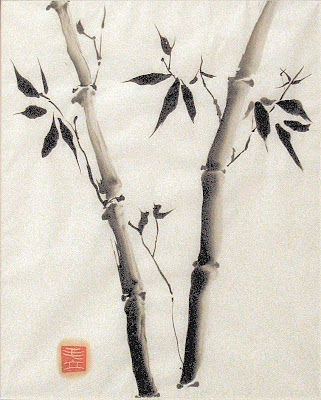Non-Western Art
Sunday, October 23, 2011
Modern Chinese Art
This sculpture, from Modern China, is reminiscent of Zhu Ming's public appearances in a bubble. It appears as if a person is trapped inside an aluminum foil sheet. At first glance, you might assume someone was posing under this sheet and staying completely still, or is trapped under the guise of this sheet.
This painting was very interesting because it resembles the graphics of a 1980's or 1990's video game. However, it is a mockery of Mao and his typical salute. It's interesting to see the different approaches to insulting parts of Communist Chinese culture.
This photo of a sculpture in modern China, appears to be taking a a page out of Botero's work, where he painted fattened versions of people. If you look closer, the figures have pig noses and are wearing pink versions of a Santa Clause costume; a clear mockery of the gluttony in Communist China.
Monday, October 10, 2011
Chinese Paintings
Similar to the paintings of the Northern Song dynasty, this painting has many features of a monumental style painting. With the mountains representing permanence, water representing change, and clouds representing mystery, the artist captures the yin and yang spirit in this painting.
This is another example of a monumental style painting. This painting features a small shack nearly hidden in the immense landscape. This represents the order in Confucian China, where "people and their accomplishments are always small in relation to nature". It is also interesting how both of the first two paintings feature boats in the bottom right corner.
This painting almost captures a combination of the Tang dynasty style and Northern Song dynasty style. The mountains and water match the scenes in monumental style paintings, but the blue and green colors applied to the painting pick up on decorative style paintings in the Tang dynasty.
This very simple painting is one of great importance in Chinese art. Bamboo was the quintessential symbol for the virtuous Chinese gentleman. Bamboo was very important in China as it represented Confucian order, it's characteristics relating to Chinese life. This painting could possibly be perceived as a Southern Song dynasty painting, because of it's simplicity, but it might also be considered amateur, or literati painting.
Tuesday, September 27, 2011
Ganesha, the elephant-headed Hindu God of success
This image of Ganesha shows him with his father, Shiva and his father's vehicle, the white bull named Nandi. It is a more humanized version of Ganesha because his face is given more human qualities aside from the long nose and big ears of an elephant. It is interesting to see a slightly human face considering that stories of Ganesha's creation involve a young elephant's head being placed on a young boy's body.
This shows Ganesha with a human body, but the head is strictly that of an elephant's. It is interesting to see different representations of Ganesha, considering that the head of Ganesha represents the soul, which is the ultimate supreme reality of human existence, and the body of Ganesha represents the earthly existence of human beings.
This image of Ganesha shows a more abstract version of the Hindu God, with only the head and body being the most distinguishable parts of the drawing. You would have difficulty recognizing the creature below Ganesha, a mouse, if not for the head. The mouse is Ganesha's vehicle, meaning he is humble enough to ride the smallest of creatures. Ganesha is also holding up his right hand in a similar way to Shiva in the first picture we viewed.
Subscribe to:
Comments (Atom)










